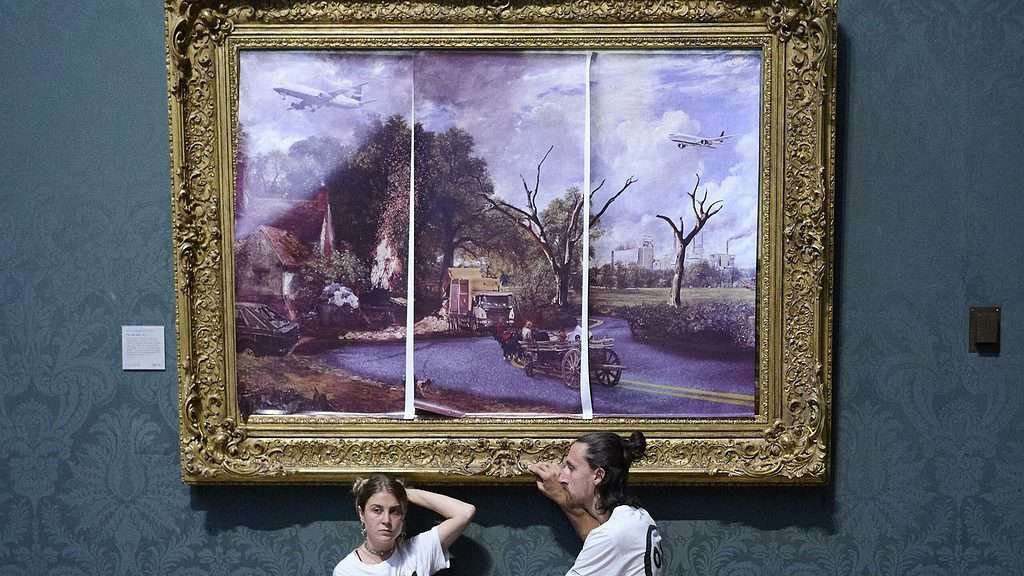Back in July, Hannah Hunt and Ezen Lazarus, two supporters of the Just Stop Oil climate organization, taped printed posters on a painting in the National Gallery before gluing their hands to its frame. Now, a judge ordered them to pay $1,000 as a way to compensate the London museum for the damage caused to the painting and its frame. As this type of disruptive protest seems to have become common, the decision could be a turning point.

The painting, The Hay Wain, was painted by John Constable in 1821 and shows a rural Suffolk scene of a wagon returning to the fields across a shallow ford. During the protest, the activists pasted three panels over its canvas that reimagined the scene, replacing the river with a road and adding a factory and airplanes in the background.
The two campaigners said Articles 10 and 11 under the European Convention of Human Rights (the rights to freedom of expression and freedom of assembly respectively) protected their actions, but this was rejected by Judge Daniel Sternberg who said the damage was “significant, not trivial” and most importantly, was “without lawful excuse.”
Hunt and Lazarus said they were advised by an “art expert” who told them that “low tack tape” and a small amount of glue wouldn’t cause damage to the painting or its frame. Their actions might actually increase the value of the painting, they said, citing an alleged $8 million increase in the value of Van Gogh’s Sunflowers after another climate protest.
The court heard from the museum that The Hay Wain wasn’t affected itself but the varnish on top and the surrounding frame was damaged. The painting was taken to be restored at the cost of $1,000 and fitted with a glass sheet before it was re-exhibited. This is what Hunt and Ezen will have to pay the National Gallery as compensation.
Both protesters said they wanted to “raise awareness” of the “severity” of the climate crisis, claiming their actions received “huge” media attention. “People need to hear a fire alarm,” Hunt said. She added they also aimed to “inspire others,” claiming they “brought hope” to schoolchildren who clapped in the museum after their actions.
Hunt and Lazarus insisted they had tried other methods of campaigning but with “little impact.” They said they engaged in non-violence training to ensure the protest was peaceful and that they chose the National Gallery because if wouldn’t affect traffic or people getting to work – as it happened with other previous protests across the UK.
Expanding climate protests
Famous artworks have been attacked so far this year by protesters from various activist groups asking for action on the climate crisis. The incidents include mashed potatoes and soup thrown at Monet and van Gogh’s paintings, respectively. Activists have also glued themselves to artworks by Botticelli, Boccioni and other old masters.
Most recently, environmental activists threw paint at the entrance of Milan’s prestigious La Scala opera house this week. The protest came ahead of the gala opening of the new season. Two people unfurled banners reading “Last Generation – No Gas and No Carbon” before being detained and taken away in police cars.
However, recent research has shown that this type of protest doesn’t really help the cause. In a series of surveys, they found that at least in the US, the public disapproves of these disruptive protests, even when they are nonviolent — and this type of protest makes people less likely to approve of climate action.
Almost 100 directors of museums and galleries from around the world recently signed a joint statement arguing that climate activists aren’t fully aware of how delicate the artworks are. “They underestimate the fragility of these irreplaceable objects, which must be protected as part of our world cultural heritage,” the statement reads.


